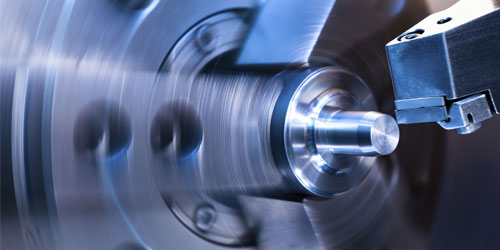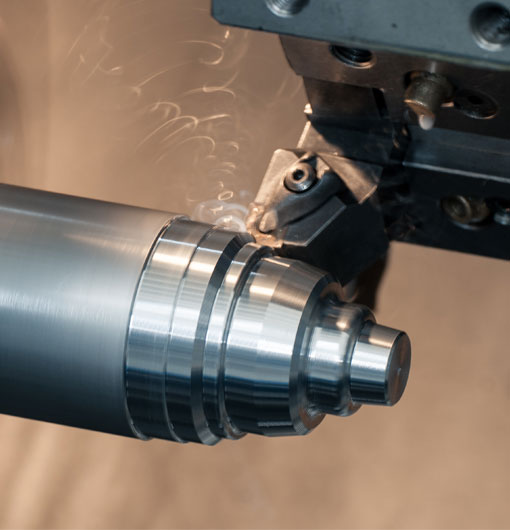CNC (Computer Numerical Control) turning machines have revolutionized manufacturing processes across industries, empowering businesses to produce complex, high-precision parts in an efficient and cost-effective manner. This blog post delves into the fundamentals of CNC turning machines, their components, and their applications in diverse sectors.
What is a CNC Turning Machine?
A CNC turning machine, also known as a CNC lathe, is a vital tool used to manufacture components with cylindrical, conical, or curved shapes by removing material from a rotating workpiece. The machine utilizes computer-aided programming and coordinates movement between the cutting tools and the workpiece to create a uniformly shaped product, ensuring high levels of accuracy and repeatability.
Components of a CNC Turning Machine
A CNC turning machine consists of several key components, which include:
1. Machine Bed: The machine bed provides a stable platform for the machine components and supports the weight of the workpiece, the cutting tools, and the machine itself. It is generally made of cast iron, which helps to dampen vibrations and maintain stability.
2. Headstock: The headstock is located at one end of the machine bed and contains the spindle, which holds the workpiece in place as it rotates. The headstock also houses the motor that powers the spindle.
3. Tailstock: The tailstock supports the other end of the workpiece and can be moved along the machine bed to accommodate different lengths of material. It can also be used to assist in drilling or tapping operations.
4. Tool turret: The tool turret holds multiple cutting tools and allows for efficient tool changes during operation. The turret rotates to bring the required cutting tool into position, enabling the machine to perform various tasks seamlessly.
5. CNC Controller: The CNC controller is the brain of the CNC turning machine, as it processes and executes the code entered by the machine operator. The controller sends signals to the various machine components, coordinating their movements to achieve the desired machining tasks.
6. Slides and Guideways: Slides and guideways enable the controlled movement of the tool turret along the machine bed, ensuring precise positioning of the cutting tools in relation to the workpiece.
How Does a CNC Turning Machine Work?
The process of using a CNC turning machine typically involves the following steps:
1. Designing the part: Engineers use CAD (Computer-Aided Design) software to design the part or component, ensuring that it meets the required specifications.
2. Creating code: Using CAM (Computer-Aided Manufacturing) software, the designed part is translated into G-code, which is a programming language used by CNC machines to control the machining actions.
3. Setting up the machine: Before beginning the machining process, the operator must load the workpiece onto the spindle and secure it with a chuck. The cutting tools are loaded into the tool turret, and the CNC controller is set up with the required parameters.
4. Executing the program: The operator initiates the program, and the CNC controller takes over. It sends instructions to the machine components, orchestrating the precise movements of the cutting tools in relation to the workpiece to produce the desired component shape.
5. Inspecting the finished part: Once the program is complete, the finished part is removed from the spindle, and its dimensions are checked to ensure compliance with the desired specifications.
Applications of CNC Turning Machines
CNC turning machines are ubiquitous across various industries due to their versatility and capability to produce high-precision parts. Some common applications include:
1. Automotive: CNC turning machines are vital in the automotive industry, where they are used to manufacture components such as engine parts, shafts, axles, and gears.
2. Aerospace: The aerospace industry relies on CNC turning machines to create high-precision parts such as turbine blades, aircraft components, and satellite parts.
3. Medical: CNC lathes are utilized in the medical industry to produce intricate parts like surgical instruments, implants, and prosthetics.
4. Electronics: Smaller CNC turning machines can be used for manufacturing electronic components such as connectors, contacts, and semiconductor casings.
5. Oil and Gas: Components used in the oil and gas industry, such as drilling equipment and valves, can be produced with the help of CNC turning machines.
In summary, the advancement and widespread adoption of CNC turning machines have had a profound impact on manufacturing processes, streamlining operations, and allowing companies to achieve unparalleled precision and efficiency. As modern manufacturing continues to demand higher levels of accuracy and complexity, CNC turning machines will undoubtedly remain a vital component of the production landscape.
cnc turning machine wikipedia













